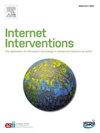“谁能融入,为什么(不融入)?”混合护理中心理治疗师患者包容的质性研究
IF 4.1
2区 医学
Q1 HEALTH CARE SCIENCES & SERVICES
Internet Interventions-The Application of Information Technology in Mental and Behavioural Health
Pub Date : 2025-06-18
DOI:10.1016/j.invent.2025.100847
引用次数: 0
摘要
心理治疗师可能成为将数字干预融入心理治疗的瓶颈,被称为混合治疗(BC)。在文献中,各种因素被讨论为BC的潜在纳入、排除或限制标准。方法本访谈研究的目的是更深入地了解心理治疗师在邀请患者参加BC时所考虑的因素。为此,我们采访了7位具有心理动力学和认知行为背景的心理治疗师,他们参加了常规门诊心理治疗中BC的自然主义试验。结果心理治疗师在考虑向哪些患者引入BC时,很少考虑固定的纳入或排除标准。基本的技术要求必须满足,病人必须“适合门诊治疗”。心理治疗师发现,患者对BC的反应,就像他们的动机一样,是考虑BC的决定性因素。心理治疗师强调患者对BC的动机是其实施的潜在瓶颈。因此,一个成功的实施策略应该侧重于加强心理治疗师和患者参与BC的动机。心理治疗师对患者特征的开放性表明,门诊护理中的BC可能针对广泛的患者群体。本文章由计算机程序翻译,如有差异,请以英文原文为准。
“Who blends in and why (not)?” A qualitative study on psychotherapists' patient inclusion in blended care
Introduction
Psychotherapists may act as bottlenecks in the integration of digital interventions into psychotherapy, known as blended care (BC). In the literature, various factors are discussed as potential inclusion, exclusion, or limiting criteria in BC.
Method
Our aim for this interview study was to gain a deeper understanding of the factors psychotherapists consider when inviting patients to participate in BC. For this purpose, we interviewed seven psychotherapists with a psychodynamic and seven psychotherapists with a cognitive behavioral background who participated in a naturalistic trial on BC in routine outpatient psychotherapy.
Results
Psychotherapists considered few fixed inclusion or exclusion criteria when considering which patients to introduce BC to. The basic technical requirements had to be met and the patients had to be “fit for outpatient therapy”. Psychotherapists found patients' response to BC, like their motivation, to be a decisive factor when considering BC.
Discussion
Psychotherapists emphasized patient motivation for BC as a potential bottleneck in its implementation. Therefore, a successful implementation strategy should focus on strengthening both psychotherapists' and patients' motivation to engage with BC. The openness of psychotherapists towards patient characteristics suggests that BC in outpatient care may target a broad patient population.
求助全文
通过发布文献求助,成功后即可免费获取论文全文。
去求助
来源期刊

Internet Interventions-The Application of Information Technology in Mental and Behavioural Health
Medicine-Health Informatics
CiteScore
6.50
自引率
9.30%
发文量
94
审稿时长
6 weeks
期刊介绍:
Official Journal of the European Society for Research on Internet Interventions (ESRII) and the International Society for Research on Internet Interventions (ISRII).
The aim of Internet Interventions is to publish scientific, peer-reviewed, high-impact research on Internet interventions and related areas.
Internet Interventions welcomes papers on the following subjects:
• Intervention studies targeting the promotion of mental health and featuring the Internet and/or technologies using the Internet as an underlying technology, e.g. computers, smartphone devices, tablets, sensors
• Implementation and dissemination of Internet interventions
• Integration of Internet interventions into existing systems of care
• Descriptions of development and deployment infrastructures
• Internet intervention methodology and theory papers
• Internet-based epidemiology
• Descriptions of new Internet-based technologies and experiments with clinical applications
• Economics of internet interventions (cost-effectiveness)
• Health care policy and Internet interventions
• The role of culture in Internet intervention
• Internet psychometrics
• Ethical issues pertaining to Internet interventions and measurements
• Human-computer interaction and usability research with clinical implications
• Systematic reviews and meta-analysis on Internet interventions
 求助内容:
求助内容: 应助结果提醒方式:
应助结果提醒方式:


